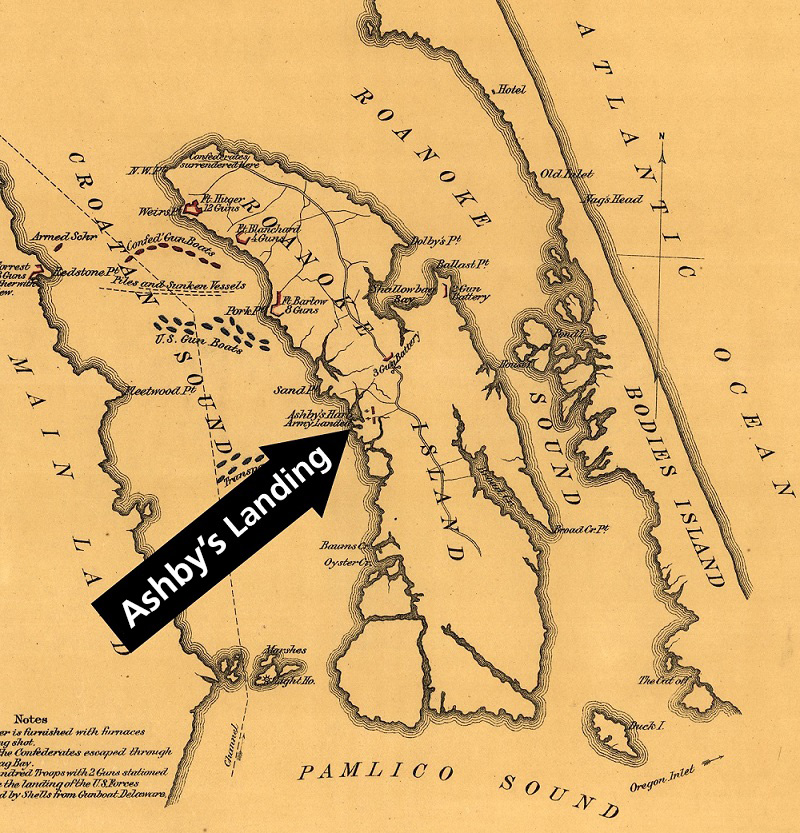Last updated: July 20, 2024
Person
Thomas Robinson

NPS Photo
Thomas R. Robinson, a figure shrouded in mystery like many other formerly enslaved individuals who aided the United States Army, serves as an inspiration for the fight for freedom alongside like-minded individuals.
He was born around 1845 in Roanoke Island to James Robinson and Pleasant Davis. Not much is known about his life, but his most notable achievement was providing Major General Ambrose E. Burnside with crucial information during the Battle of Roanoke Island in February 1862, aiding in the United States Army's strategic attack on the Confederate-controlled island. At the time of this event, Thomas was around 16 or 17 years old, earning him the moniker “Young Tom”. According to various sources, Thomas self-emancipated by sailing from Roanoke Island, where he had been enslaved by a man named Joseph M. Daniel, towards Cape Hatteras, where the Union troops were encamped and other freedom-seekers had gone. There, Thomas utilized his knowledge to forever alter the course of the Civil War.
Before he freed himself, Thomas had meticulously memorized the island’s forts and surrounding waters, which Frederick Douglass later described as being equivalent to the expertise of an engineer. Thomas's information proved invaluable to General Burnside, who extensively conferred with him to determine the optimal landing points for the Union forces. Ultimately, with Tom’s guidance, the Union troops successfully landed at Ashby’s (Ashbee's) Harbor on the evening of February 7, 1862.

The Battle of Roanoke Island was relatively brief, lasting two days. The Union's capture of the island resulted in an influx of people from neighboring Confederate territories seeking freedom, eventually leading to the establishment of the Freedmen’s Colony of Roanoke Island. After the battle, Thomas did not become part of the Freedmen's Colony. Instead he continued to serve alongside General Burnside. Reportedly, he accompanied General Burnside and the IX Corps in various campaigns across the country, including Maryland, Ohio, Virginia, and Tennessee. During his time working with Burnside, Thomas participated in several significant battles, including at the Battle of Antietam, the Battle of Fredericksburg, the Knoxville Campaign, and the Battle of the Wilderness, as well as the Battle of Spotsylvania. Additionally, Thomas devoted a considerable amount of his time and energy to improving his literacy skills.
After the conclusion of the Civil War in 1865, Thomas Robinson move to Bristol, Rhode Island, perhaps following Burnside who was elected governor here in May of 1866. On the May 10th, 1868, Thomas married Mehitable Howland, consolidating his roots in the local community. Mehitable was born in Bristol, and was the daughter of John Howland and Louisa Clark, a well-respected African American family there. Following the war, Thomas dedicated the majority of his time to working as a farmer, coachman, and teamster in Bristol until at least 1890. Information about Thomas's later years is limited. Nevertheless, he remains an exemplary figure who fought for his own freedom and was willing to put himself in harm's way for others striving to achieve the same dream.
